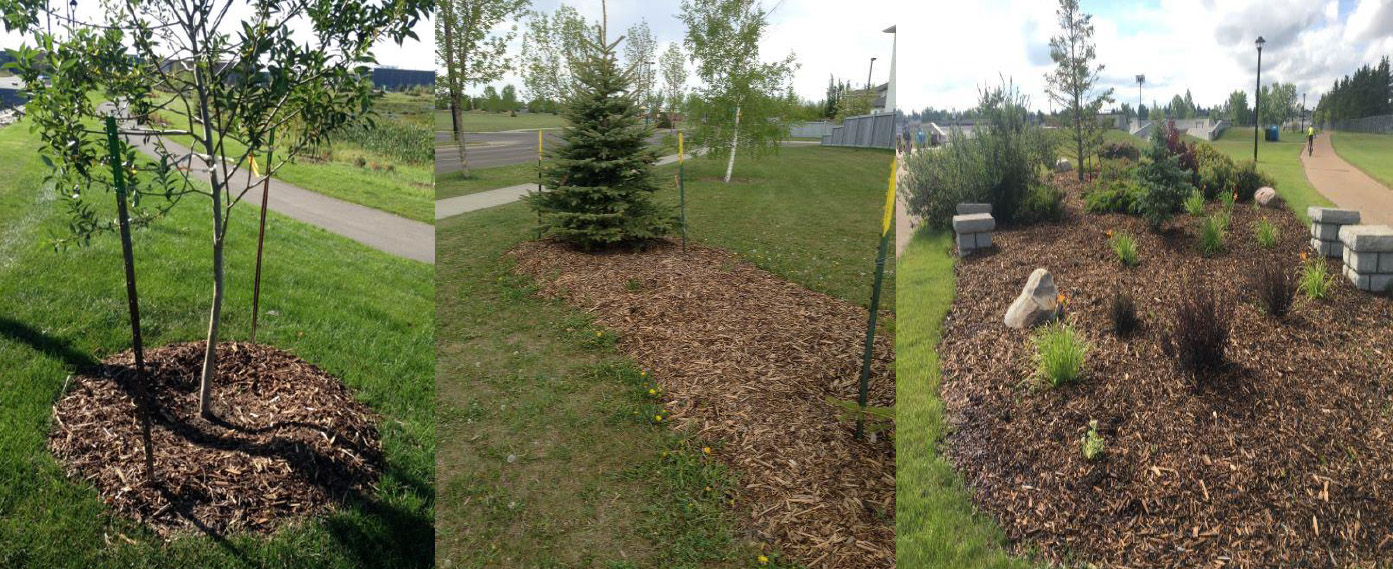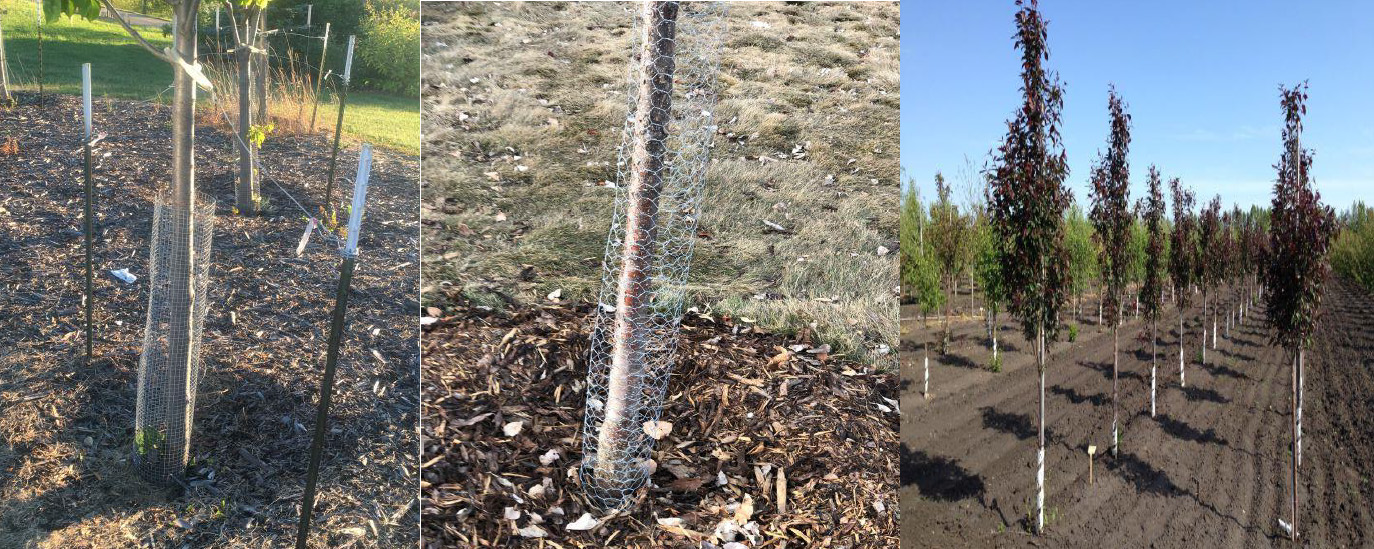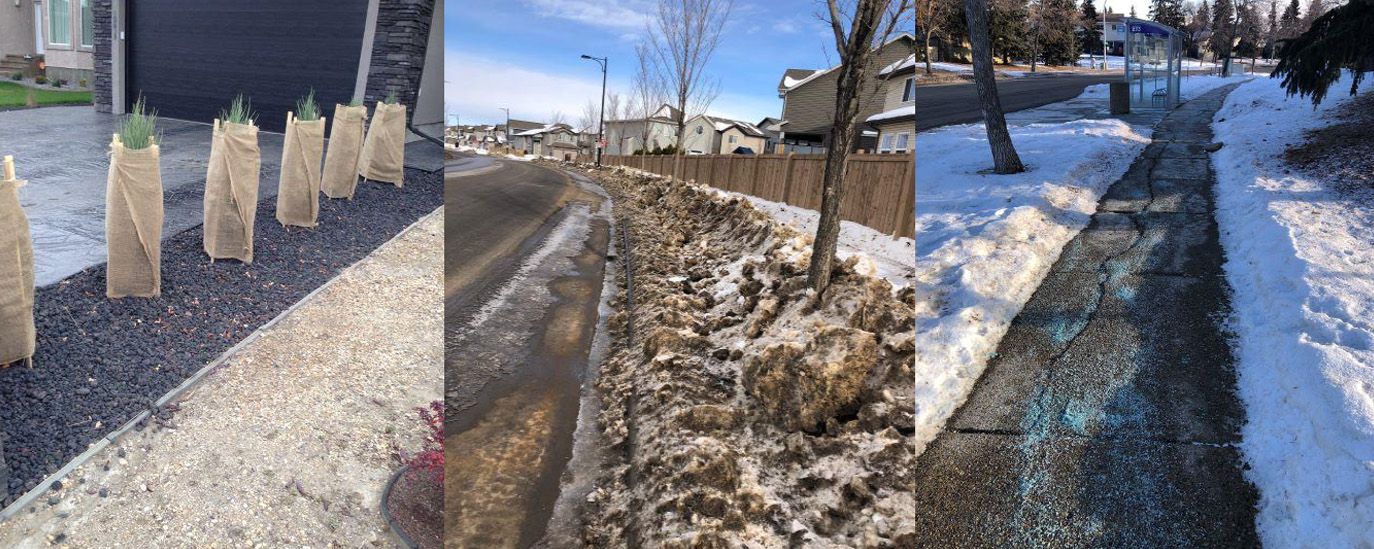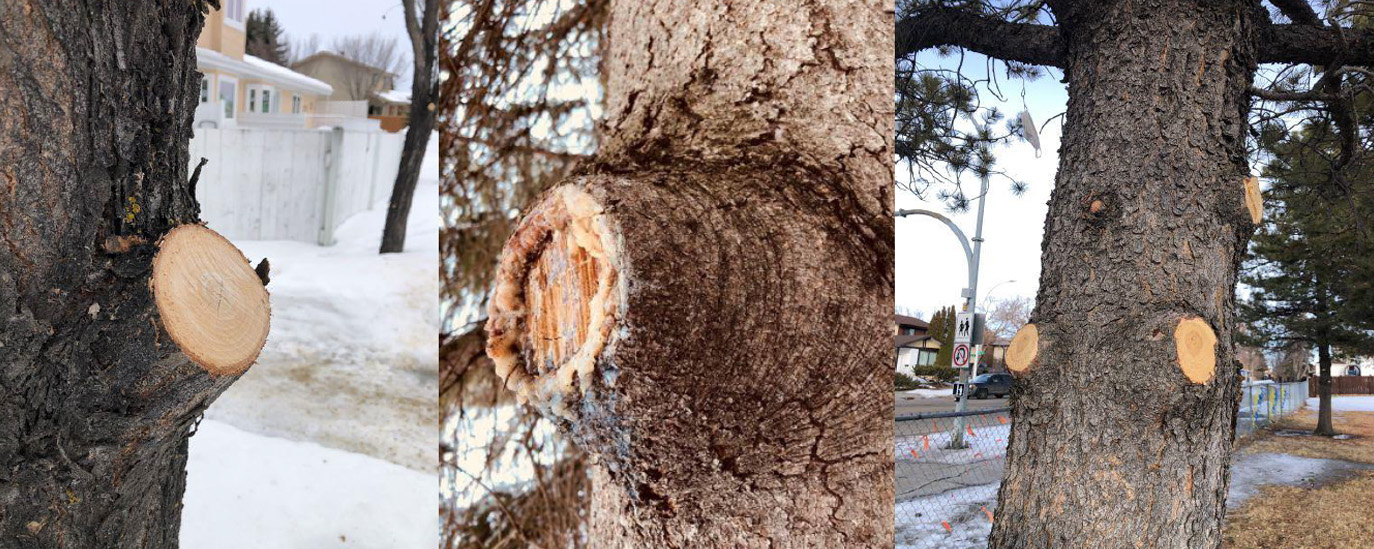For trees and shrubs, winter presents a series of formidable challenges. Harsh conditions, from freezing temperatures to limited sunlight, can take a toll on their health and vitality. In the harsh winter climates of Alberta, trees and shrubs often face various threats that can lead to extensive damage. From the biting cold temperatures and dry air to the winter sun and the relentless forces of wildlife, salt, deep freezes, heavy snow, and ice, the challenges are plentiful. However, by taking a few proactive measures, you can significantly reduce the potential for damage and ensure the survival and vitality of your trees and shrubs.
Preparing trees for winter in Alberta is a crucial aspect of tree care that ensures their health and resilience during the challenging cold months. By selecting the right tree species, providing adequate water in fall, protecting roots using mulch, deterring wildlife and pests, and avoiding salt damage, you can set up your trees and shrubs to thrive and greet the spring with vitality.
| Questions? |
|---|
| Call 403-223-8735 Monday - Friday 8:00 am - 4:30 pm |
Cold Winter Damage and Prevention
Cold winter damage is a common concern, arising from factors such as a tree's inability to endure extreme cold, dry winds and insufficient snow cover, in some regions of Alberta. The weight of heavy snow and ice late in the fall or early spring, also causes damage. Here's how you can minimize the risk:
- Select Hardy Species: Alberta falls within Canada's cold hardiness zones 1, 2, 3, and partially zone 4. To safeguard your trees and shrubs from the cold, choose species that are hardy enough to thrive in our climate.
- Fall Watering: While it may seem counterintuitive, winter drought can occur when trees lose moisture through transpiration but cannot replenish it due to frozen soil. Watering trees prior to the first soil freeze is extremely important.
- Strategic Planting: Consider planting your trees and shrubs in sheltered areas, such as near buildings or in locations already protected by established trees. This positioning shields them from direct exposure to harsh winds.
- Pruning: Properly pruning your trees reduces the likelihood of branch breakage during heavy snowfall or ice storms.
- Installing Plastic Tree Guards: Installing plastic guards protects young tree bark from winter sunscald. Many young, thin-barked ornamental and fruit trees suffer from sunscald. This physiological problem of frozen tissue (dead tissue) occurs during the winter, near sunset. It mostly occurs on the south or southwest side of the trunk, which is also heated by the sun, before it thaws and then rapidly refreezes.
Root Injuries and Protection
Root injuries caused by cold conditions are among the most significant threats to trees and shrubs. Unlike branches, buds, or trunks, roots do not enter dormancy at the same time. Research has shown that roots continue to function and grow during the winter, particularly when soil temperatures are favourable. However, freezing, heaving, and cracking of winter soil can physically harm roots, particularly the fine feeder roots in the upper organic layers. Protecting the roots is of utmost importance.
- Deep Watering: One common misconception is that trees do not need water during the winter months. While it's true that trees use less water in winter due to reduced transpiration (water loss through leaves), they still require hydration to survive. It is extremely important to ensure your trees have enough water for winter. Before the freeze sets in, provide deep watering for young and mature trees. Frozen water acts as an excellent insulator, reducing frost penetration into the root zone. Properly moist soil retains more heat energy, making it harder for frost to penetrate deeply and harm the roots.
- Snowfall Benefits: Early snowfall helps keep the soil from freezing, even during brutally cold temperatures. Additionally, if snow arrives after the soil has already frozen, it acts as a protective blanket, shielding the roots from temperature fluctuations during thawing periods.
- Mulching Magic: Mulching is a key practice to protect roots. It prevents weed growth, shields roots from extreme heat, and retains moisture. Creating a donut-shaped wood chip cover around your tree is a simple yet effective way to conserve moisture and reduce soil freeze.
- Inspect and Fill Cracks: For newly planted trees, check for cracks in the soil due to planting or dry fall conditions. Filling these cracks prevents cold air from entering the soil. Proper mulching can also serve this purpose.
- Fertilization: On sandy soils, consider fertilization in the spring or fall. For heavy clay soils, opt for fertilization after the leaves have dropped.
- Leave Leaves: Rather than disposing of fall leaves, leave them on the ground, mulch them, or blend them into the soil. This retention helps preserve nutrients. However, be cautious if you detect leaf diseases (leaf spots, bronze leaf disease, etc.), as proper disposal may be necessary to prevent future issues.
 Image 1: Mulching is the most important activity you can do to prevent root damage from winter freezing and reduce the possibility of tree mortality.
Image 1: Mulching is the most important activity you can do to prevent root damage from winter freezing and reduce the possibility of tree mortality.
Wildlife Damage and Prevention
As winter's harsh conditions push wildlife to seek food sources, young and recently planted trees often become targets for various species. Mice, voles, rabbits, deer, and moose can cause severe damage by gnawing on bark, twigs, branches, and buds. Protect your trees by implementing these strategies:
- Mesh Wire Protection: Use 1/4 inch mesh wire to safeguard trunk bark against smaller creatures like mice, rabbits, voles, and, to some extent, deer and moose.
- Plastic Tree Guards: Employ plastic tree guards to deter smaller animals from accessing your trees. Plastic guards can also be used to protect tree bark from sunscald.
- Proper Installation: Ensure that mesh wires or plastic tree guards have no gaps between the bottom and the ground, preventing animals from crawling beneath.
- Large Fencing: Erect larger fences to ward off deer or moose. Complement this with repellents, when necessary.
 Image 2: Meshed wire and plastic guards around trunks
Image 2: Meshed wire and plastic guards around trunks
Salt Damage and Prevention
Alberta relies on various salts, including sodium chloride, for de-icing roads during winter. While effective for safety, some studies have highlighted their damaging effects on trees and shrubs. Protect your vegetation by:
- Reducing Salt Usage: Avoid or minimize the use of salt for de-icing, especially in areas where trees and shrubs are prevalent.
- Choosing Salt-Tolerant Species: In areas with high salt use, select tree and shrub species known for their salt tolerance.
- Alternative De-Icing Materials: Opt for alternative de-icing materials like sand or small gravel, which have less detrimental effects on vegetation.
- Burlap Shielding: Place trees under burlap covers to shield them from salty spray particles, particularly near driveways or roadways.
- Repositioning: If possible, relocate trees and shrubs away from areas with heavy salt usage.
 Image 3: Small burlap protects trees from salt which can be on the street or in the snow around trees.
Image 3: Small burlap protects trees from salt which can be on the street or in the snow around trees.
Pruning
In the fall, after the leaves have dropped (usually in September and October), consider pruning to remove dead, diseased, or damaged (the 3Ds) branches. Dispose of or burn any infested branches. Utilize proper pruning techniques, such as the three-way cut method, to avoid harming the branch collar. However, avoid pruning during this time if it's not necessary, as it can cause additional stress to the tree. Image 3: Proper pruning allows trees to heal a wound.
Image 3: Proper pruning allows trees to heal a wound.
